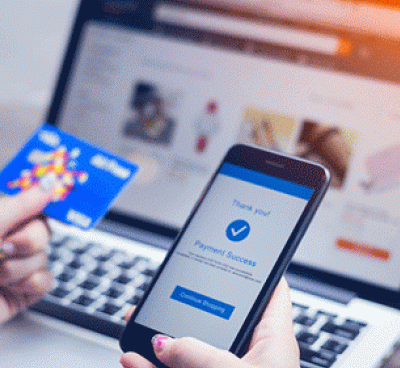AUSTIN, Texas & WINNIPEG, Manitoba–(BUSINESS WIRE)–Bold Commerce, the ecommerce technology company that powers checkout and subscription experiences for the world’s leading retailers and emerging DTC brands, today released The Checkout Benchmark. The new benchmark research reveals that nearly half (48%) of shoppers that initiate the checkout process on an ecommerce site are abandoning before completing their purchase. And on mobile, the number is even higher: 58% abandon their purchase after proceeding from cart to checkout, but before completing their order. The inaugural report explores shopper dropoff that occurs specifically during checkout, exposing key reasons shoppers abandon at this critical stage, including friction and poor user experience related to payment options, shipping and device experience.
Retailers have long focused on cart abandonment, due in large part to the 70% of shoppers that abandon their cart before making it to checkout to purchase. The industry’s laser focus on cart abandonment has built an assumption that if retailers can get shoppers from cart to checkout, they’ll complete the purchase. It’s for this reason that checkout abandonment is often an unrecognized hurdle for retailers.
The Checkout Benchmark establishes the industry’s first series of metrics for brands to measure their checkout performance compared to other retail brands. The research analyzed data from 3 million checkout sessions, generating $138M in revenue across 80+ retailers to uncover the true story of checkout performance and variables impacting checkout completion rate.
Other key findings from The Checkout Benchmark include:
- Shoppers often need to edit details such as delivery, shipping, and quantity during checkout, and drop off when they’re not able to. The Checkout Benchmark reveals that mobile shoppers who convert to buyers are 41% more likely to review or edit their checkout. This behavior reveals that checkout experiences must be flexible enough to allow shoppers to review and revise in the final moments leading up to conversion.
- Different device types benefit from different checkout experiences. Retailers have long tried to crack the code of optimizing the number of clicks and pages in checkout to maximize conversion, but The Checkout Benchmark reveals there is no one-size-fits-all answer. For example, across devices single-page checkouts convert at 48.4%–a rate nearly identical to progressive or multi-page checkouts (47.5%). But on mobile, single-page scrolling checkouts actually see lower checkout completion rates (41.6%) than progressive multi-page checkouts, which deliver 44.7% checkout completion.
- As shipping fees increase, checkout completion goes down. Intuitively it makes sense that increasing shipping fees raises the barrier to purchase. The Checkout Benchmark begins to quantify this impact for brands to consider in setting shipping fee thresholds. With zero shipping fees, checkout completion rates are at 56% (desktop) and 45% (mobile). As shipping fees increase by 10%, checkout completion rates fall 6% on desktop and nearly 4% on mobile.
- PayPal remains a top digital payment choice for shoppers. Even with the proliferation of payment methods including digital wallets and Buy Now, Pay Later (BNPL) solutions, Paypal remains a top payment option for shoppers. The Checkout Benchmark found that PayPal was the digital payment choice for 38.7% of all orders. Shoppers’ preference of PayPal’s one-click to purchase will continue to gain traction with similar easy-to-purchase options vying for market share in the coming years.
“We see retail brands pouring over details like colors, product images and descriptions, loyalty tactics and other elements that influence whether shoppers make it to checkout, but then foregoing customization of the checkout itself, ” said Yvan Boisjoli, CEO of Bold Commerce. “This checkout experience gap is a wake-up call to retailers. If the checkout isn’t optimized, it doesn’t matter whether shoppers get there–they simply won’t complete their purchase.”
The Checkout Benchmark is based on Bold Commerce-powered checkout sessions from July 1, 2021 through September 30, 2021. You can find Bold Commerce’s full Checkout Benchmark here.
The Checkout Benchmark: Methodology
The Checkout Benchmark is a set of aggregated and anonymized insights focused on the checkout metrics within ecommerce sites. Strict aggregation measures are employed to ensure brand/, retailer, and shopper anonymity. These measures include requirements on analysis set size, diversity, and consistency, in order to present credible and reliable information that is insulated from concentration risk. To qualify for inclusion in the analysis set, each site must have transacted throughout the entire analysis period, in this case July 1, 2021 through September 30, 2021. Additional data hygiene factors are applied to ensure accurate metric calculation.
The Checkout Benchmark is not directly indicative of the operational performance of Bold Commerce or its reported financial metrics. The performance metrics shared within this report are calculated based on the analysis set, and should not be taken as a guarantee of site or checkout performance.
About Bold Commerce
Bold Commerce is powering anywhere commerce for brands by delivering high-converting, customizable checkout experiences. The company works with leading omnichannel retailers like Vera Bradley, Harry Rosen, and Staples Canada, and emerging DTC brands, such as Pepsi’s Mountain Dew and Game Fuel, and Mars Petcare, to reimagine commerce. Its proprietary suite of modular checkout, subscriptions and price rules solutions is compatible with multiple ecommerce platforms and headless architectures. Bold Commerce has been named to Deloitte’s Tech Fast 50, E&Y’s Entrepreneur of the Year, and CBInsights’ Retail Tech 100.





